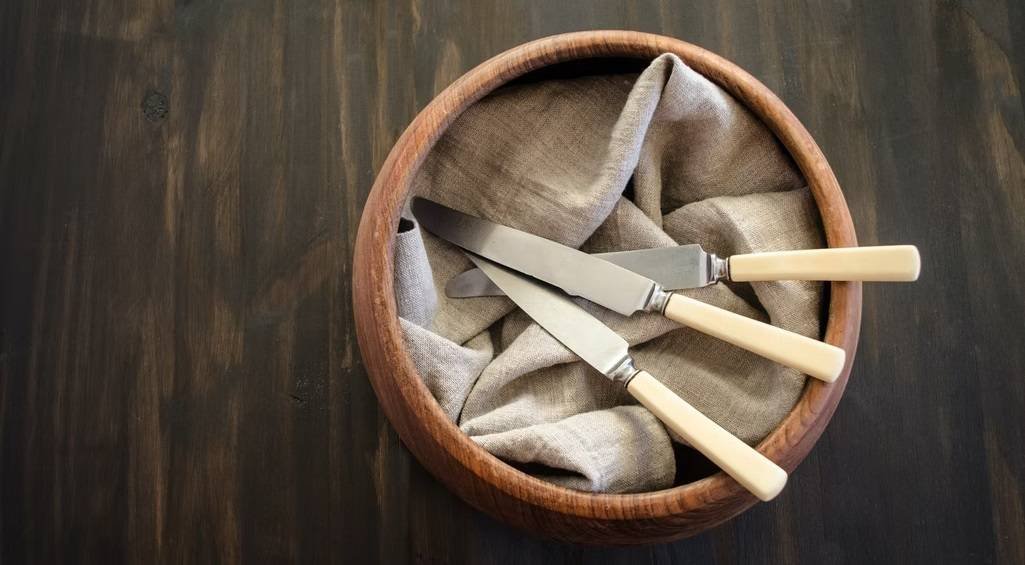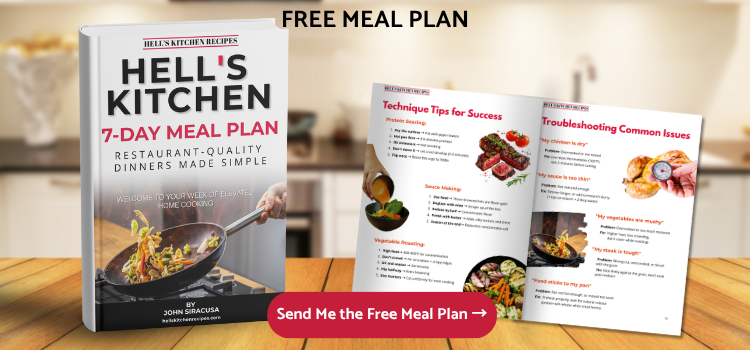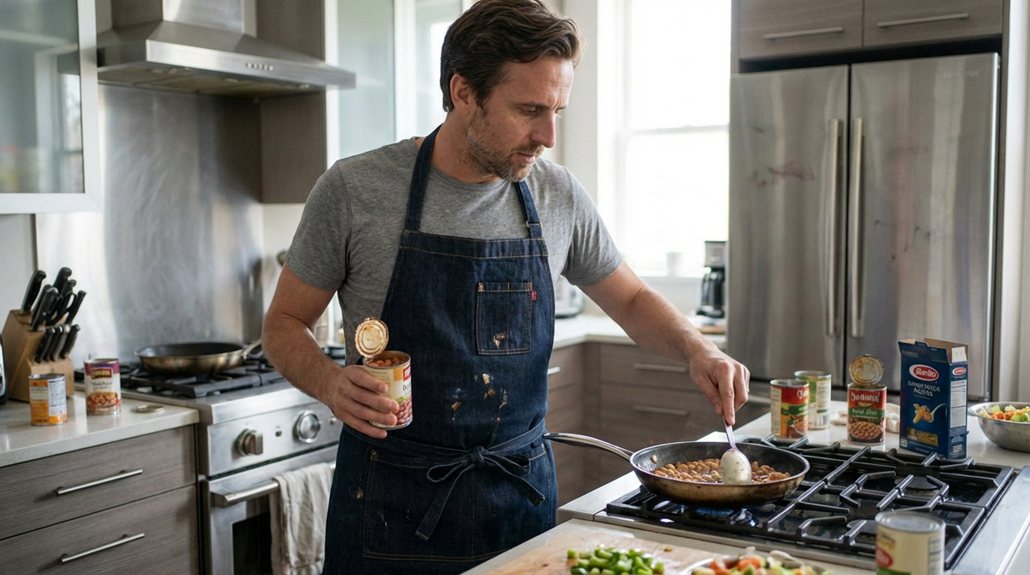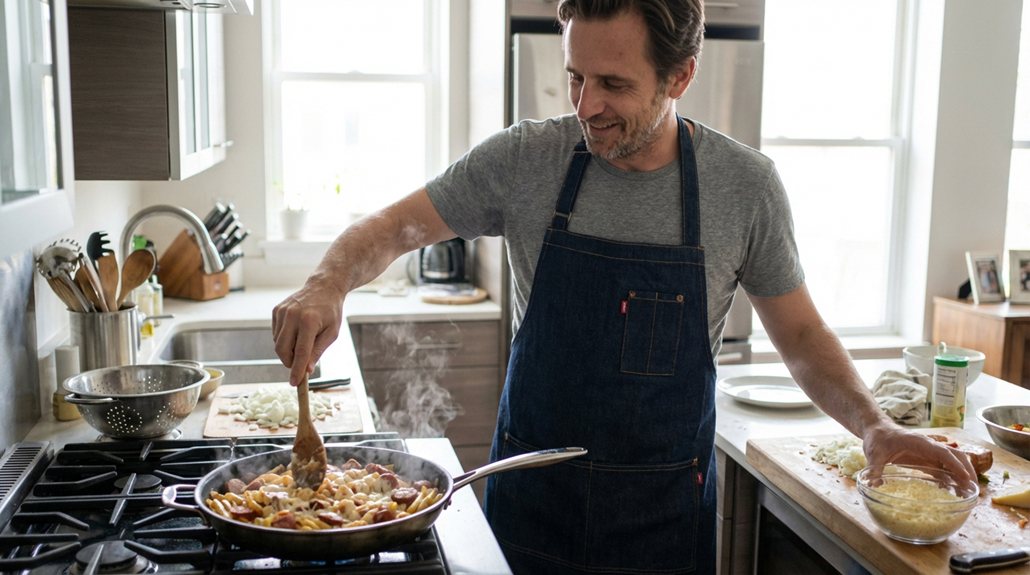Are you familiar with your table knives? Butter Knife vs. Dinner Knife If you’ve ever found yourself sitting at a set table, there’s a chance you’ve seen a dinner knife and a butter knife as part of the setting. While these knives may look interchangeable, they serve two entirely different purposes.
To clarify the distinctions between butter and dinner knives, it’s worth noting that they are usually blunt and designed solely for cutting and spreading butter on bread during meals. Conversely, dinner knives are multi-purpose utensils for cutting and serving various foods at the dinner table, such as meats and vegetables.
What is a Butter Knife?
A butter knife does exactly what its name implies. They are small, dull knives only used to spread butter on bread or other foods during mealtime.
The butter knife has two variations: the master butter knife and the butter spreader. These tools help with eating butter during mealtime, but in different ways.
Types of Butter Knives
Master Butter Knife
A master butter knife looks like a paring knife, with a sharp tip but a dull blade. These knives are designed to cut because they are meant to cut a pat of butter from the main butter dish to put on a person’s plate.
Once the butter is transferred to the plate, guests can use their butter knives to spread butter on their food. The master butter knife makes it easy and sanitary for diners to take butter from one dish and still butter their food.
Butter Spreader
A butter spreader is a knife with a dull blade and a distinctly rounded tip. This knife is kept on the bread plate and is used by individuals to spread butter on bread.
There are different ways a butter spreader can look. Some lie flat with flat handles, others have hollow handles, and some may be slightly bent for easier spreading. It all comes down to personal preference.
Butter Knife Uses
As discussed above, a butter knife is best used to spread butter. Whether adding a pat of butter to a pile of potatoes or spreading butter on a dinner roll, the butter knife is the tool for the job.
In formal dining, a butter knife is reserved for butter only. But users at home can get creative! You can use a butter knife for other spreads, like jams or sauces.
Unfortunately, you can’t use a butter knife for cutting, as is typical for any other kitchen knife. Due to their dull edges, they can’t use these knives to cut through vegetables, meat, or fish the way a different kitchen knife can.
I’ve used and recommend both knife block sets, Henckels Zwilling Pro 7-pc Knife Block Set or Classic 15-piece Walnut Knife Block Set, both available on Amazon. Visit the ZWILLING or Wüsthof Store on Amazon.
What is a Dinner Knife?
A dinner knife, sometimes called a table knife, is a multi-function knife used for all basic cutting during dining. They are typically included in most flatware and cutlery sets alongside your fork and spoon.
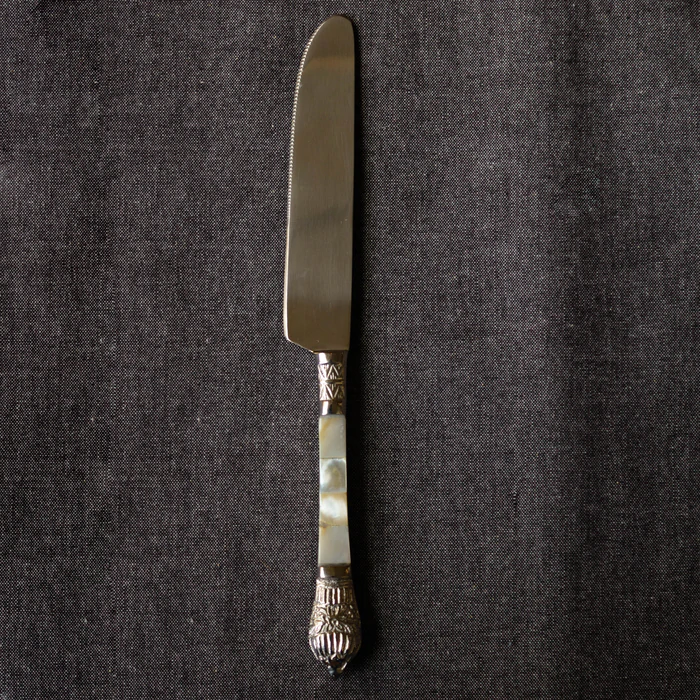
A dinner knife is usually long and flat, with a rounded end and a slightly serrated edge. A dinner knife can handle basic cutting but isn’t suited for foods that need something genuinely sharp. When someone orders a steak, a restaurant will replace the dinner knife with a steak knife as it is better suited to the job.
Dinner Knife Uses
As we touched on above, the dinner knife is meant to be used for cutting food while eatingCuttingng food into bite-sized pieces is also used to help move food around the plate and to help transfer food onto the fork while eating.
Certain foods require certain kinds of instruments for ease of use during formal dining. In informal dining, you’ll also see a fish, salad, or steak knife in your place, sitting alongside the dinner knife. Again, the dinner knife is pretty multi-purpose, but its lack of sharpness is why so many other knives exist.
Proper Knife Placement
These knives are intended for different uses; they have different placements when used in dining. This is where you should place these knives when following standard etiquette conventions.
Dinner Knife Placement
When setting a formal table, you should always set your dinner knife on the right side of the dinner plate. This is the hand most users will use to hold the knife while eating. The blade should always face inward, towards the plate.
The dinner knife is typically the innermost knife in the setting, sat directly next to the plate, as it is meant for use in the main course. However, if a guest requires a different knife, like a steak knife, this will replace the dinner knife in terms of placement.
Butter Knife Placement
Different placements exist for the master butter knife and butter spreader when setting a formal dining table.
When present, people will place a master butter knife next to the main butter dish or butter plate in the middle of the table. People can then pass around the butter dish and master butter knife, as needed, to place butter on their plates.
When setting a formal dinner table, you will place the butter spreader on the bread plate. The bread plate will be over the forks to the top left of the main dinner plate.
The butter knife should be set horizontally, with the blade resting on the middle of the plate and the handle sticking straight out on the right side. This makes it easy for your guests to grab and use it.
Which Should I Choose?
Now that you know the difference, you might ask: which knife is best?
These two knife types are suited to different foods, so it all boils down to what you’re eating, when, and why. For most casual eating at home, a dinner knife is all you need for cutting and spreading butter. However, the butter knife can elevate a place setting if you want to get fancy and formal! They can also be handy when eating snacks or foods with spreads when you need a small tool for the job.
These knives can and should be at your dinner table, especially for those looking to elevate meal time. We hope this article helped shed some light on these knives and what they’re meant to do!
